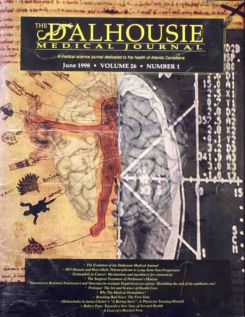The Surgical Treatment of Parkinson's Disease
DOI:
https://doi.org/10.15273/dmj.Vol26No1.4421Abstract
Parkinson‘s disease (PD) is a debilitating disorder characterized by degeneration of the nigrostriatal pathway resulting in decreased caudoputaminal dopamine (DA) levels. Nigrostriatal pathway degeneration and reduced DA stores may lead to increased rigidity, gait and speech disturbances, bradykinesia and resting tremors. Currently there is no cure for PD. but early treatment consists of Levodopa (L-dopa) therapy. With long-term L-dopa use, there is development of the ‘on-off phenomenon‘ and dyskinesias. In the majority of PD cases, L-dopa adequately controls the motor symptoms inherent to PD. but a small percentage of the Parkinsonian population is medically-incalcitrant to this therapy. Many clinical trials are currently being conducted world-wide to investigate the efficacy of surgery to treat this disease. These surgical therapies include ablative procedures, chronic deep brain stimulation, as well as the transplantation of dopaminergic cells. Neurosurgical treatment of PD is not a new concept, being attempted as early as the 1930‘s, but these procedures were plagued with many side effects that led to their abandonment. Currently, a resurgence in these techniques has evolved due to our increased understanding of basal ganglia anatomy and physiology along with recent advances in medical technology. This review will briefly discuss the benefits and short-comings of these surgical paradigms as well as the rationale behind their application.
Downloads
How to Cite
Issue
Section
License
Authors who publish with this journal agree to the following terms:
- Authors retain copyright and grant the journal right of first publication with the work simultaneously licensed under a Creative Commons Attribution License that allows others to share the work with an acknowledgement of the work's authorship and initial publication in this journal.
- Authors are able to enter into separate, additional contractual arrangements for the non-exclusive distribution of the journal's published version of the work (e.g., post it to an institutional repository or publish it in a book), with an acknowledgement of its initial publication in this journal.
- Authors are permitted and encouraged to post their work online (e.g., in institutional repositories or on their website) prior to and during the submission process, as it can lead to productive exchanges, as well as earlier and greater citation of published work (See The Effect of Open Access).


